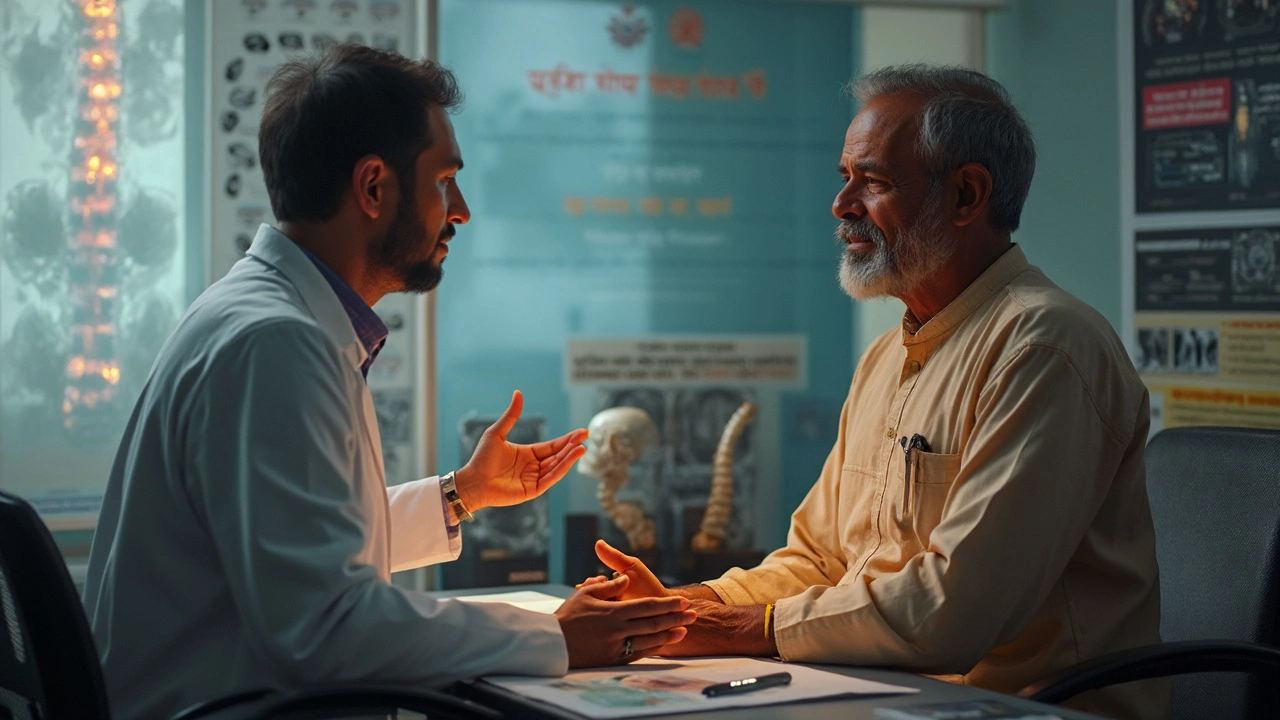Wondering who to see when your back starts acting up? This article explains what a back doctor is called, the types of specialists who treat spine problems, and when you should actually visit one. Get practical advice on how to pick the right doctor, what to expect at appointments, and why seeing a specialist makes a difference. We’ll dig into how back pain is diagnosed and treated, plus some real-world tips you’ll want if you’re facing chronic pain.
Read MoreOrthopedist: Your Go‑To Expert for Bone and Joint Pain
If your knees click, your back hurts, or a sudden injury makes moving tough, an orthopedist is the doctor who can help. These specialists train to fix muscles, bones, ligaments, and joints, so you get back to daily life faster.
Most people think orthopedists only do surgeries, but they also handle non‑surgical treatments like physical therapy, injections, and braces. Knowing this can save you from unnecessary procedures and keep costs down.
What an Orthopedist Actually Does
An orthopedist evaluates pain, checks range of motion, and orders imaging like X‑rays or MRIs. Based on the findings, they create a plan that may include exercises, medication, or a referral to a specialist therapist. For serious cases—like a broken femur or severe arthritis—they discuss surgical options and explain recovery steps.
Typical conditions they treat are knee osteoarthritis, rotator‑cuff tears, spinal disc problems, and sports injuries. They also help manage chronic issues such as osteoporosis, guiding you on bone‑strengthening strategies.
How to Choose the Right Orthopedic Doctor
Start by checking credentials: look for board certification in orthopedics and any sub‑specialty training, like sports medicine or joint replacement. Ask friends or family for referrals, and read online reviews to gauge patient satisfaction.
When you call the clinic, note how the staff handles your questions. A good practice will give clear instructions on what to bring—previous scans, a list of meds, and a short symptom diary.
During the first visit, be ready to share details: when the pain started, what makes it worse, and any activities you’ve tried to relieve it. This information helps the orthopedist pinpoint the problem quickly.
Don’t be shy about asking questions. Good queries include: "What are the non‑surgical options?" "How long will recovery take?" and "What risks should I watch for after a procedure?" Getting honest answers builds confidence in the treatment plan.
If surgery is suggested, ask the doctor to walk you through each step—from anesthesia to post‑op rehab. Knowing the timeline and milestones makes the whole process less intimidating.
After your appointment, follow the care plan exactly. Take prescribed meds, attend physical‑therapy sessions, and stick to activity restrictions. Small steps now prevent bigger problems later.
Remember, an orthopedist isn’t just for emergencies. Regular check‑ups can catch early signs of joint wear, letting you act before pain becomes severe. Think of it as a preventive tune‑up for your musculoskeletal system.
To sum up, choose a qualified bone specialist, come prepared, ask the right questions, and follow the recommended plan. With the right orthopedist on your side, you can move past pain and keep living an active life.





